‘Look, look and look again’ is Beatrice Mayfield’s mantra. A keen observer of her environment, her interest lies in how nature and urban spaces interact – and how they change visually moment by moment.
But what really excites Beatrice about these sparks of inspiration is abstracting them to create rich, multi-faceted, hand embellished surfaces. Whether it’s working on an embroidery commission for our TV screens or a jewel-like piece of wearable art, sampling, collaboration and exploring processes are key.
And in her personal work, she aims to flip expectations of what embroidery can be, creating minimal textile works using maximalist techniques, as well as upcycling as many materials as she can.
Nothing, she says, is ever a waste of time. Nor can you waste materials. It’s simply a case of repurposing and re-imagining everything and discovering real creative freedom in doing so.
Beatrice has followed her heart and perfected her craft – as well as learning how to say yes to almost everything, even when she’s not sure she can do it – something we can all learn from.
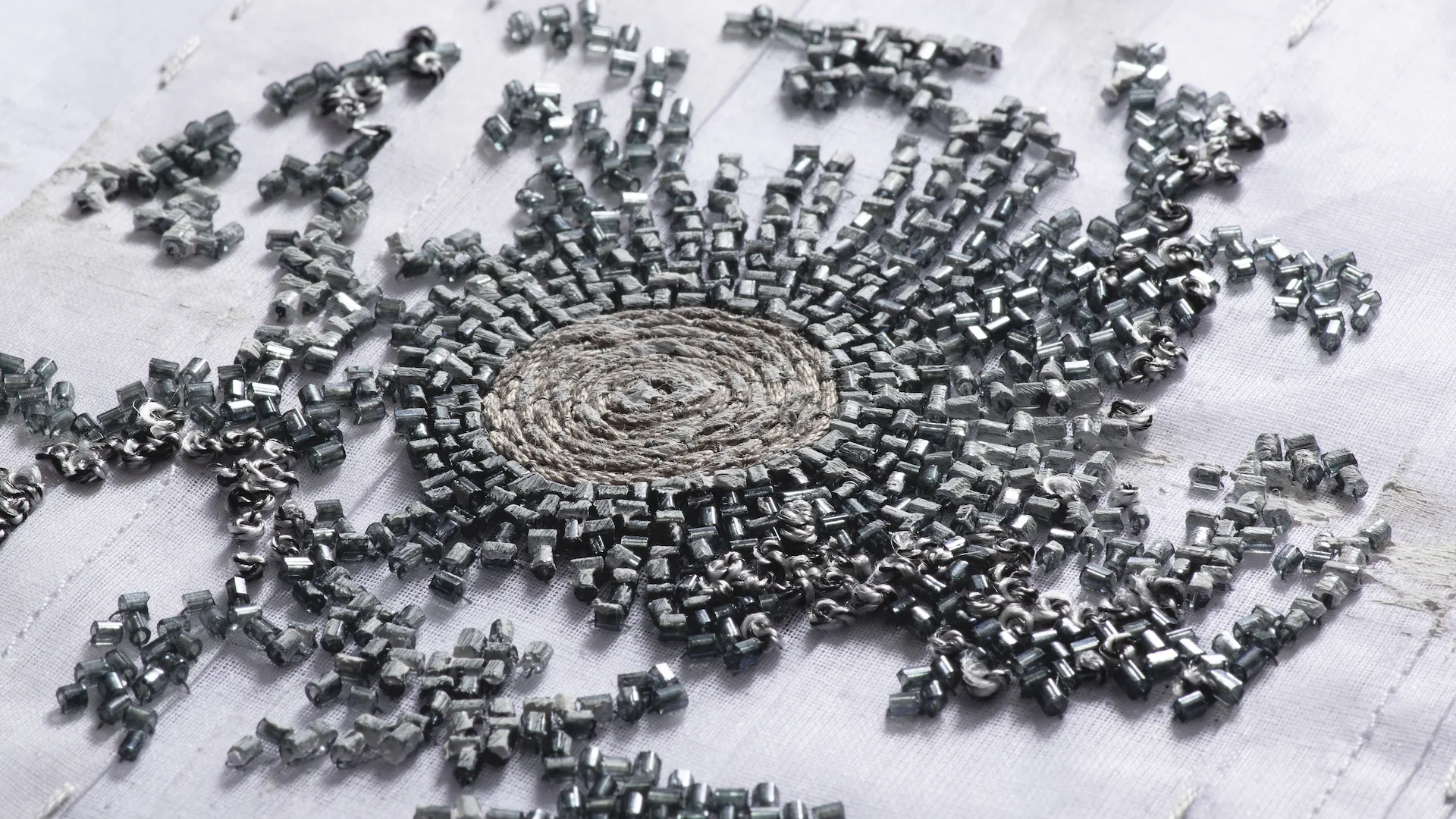
Abstract marks
Beatrice Mayfield: I’m a textile artist specialising in hand constructed, embellished and embroidered textiles. I produce one-off artworks and wearable art pieces. My work combines contemporary design with a range of traditional embroidery techniques, stitches and processes. All incorporate a high level of craftsmanship.
My work is abstract and heavily inspired by the landscape of London, where I live. I’m particularly influenced by the concrete buildings of Brutalist architecture, such as the Brunswick Centre and the National Theatre, as well as urban green spaces, like Hampstead Heath and Regent’s Park.
I love the juxtaposition of architecture and nature thriving side by side. When I look at the colours and textures that can be found on raw concrete as it ages and then those in the natural landscape – on a piece of bark or lichen for example – the two are often very similar.
My work isn’t precise, but it does use contrast, texture and the idea of the hand.
I love making work that is abstract and minimal – often the opposite of how hand embroidery and embellishment are meant to be. I also like to explore scale – how to scale up stitches or create surfaces that form entire surfaces rather simply than as decoration. And I love flowers – their structure and texture and how they are constructed.
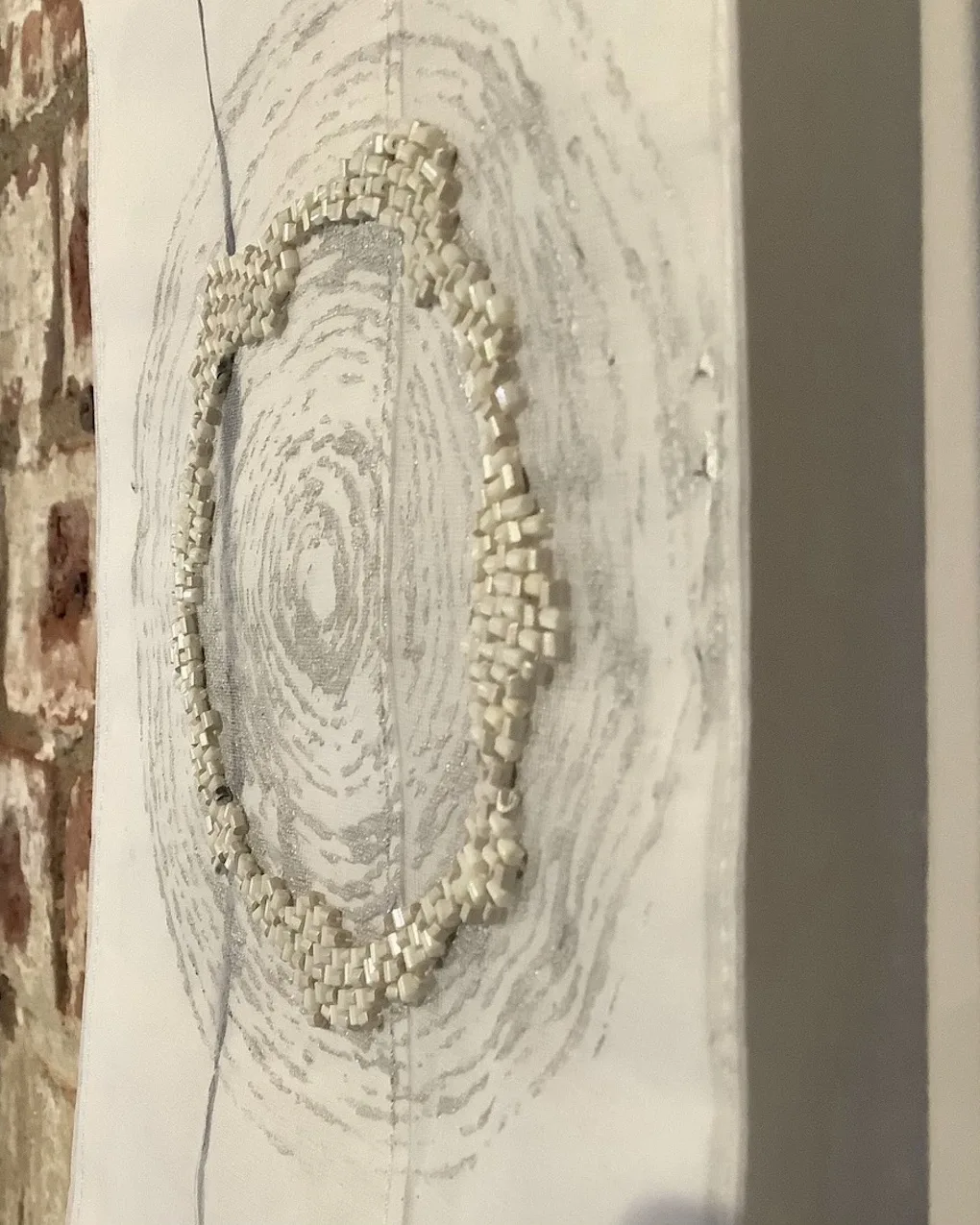
15cm x 25cm (6″ x 10″). Hand beading, Korean patchwork, block print, hand stitch. Deadstock and reclaimed materials, Miyuki beads, fabric paint, cotton organdie.
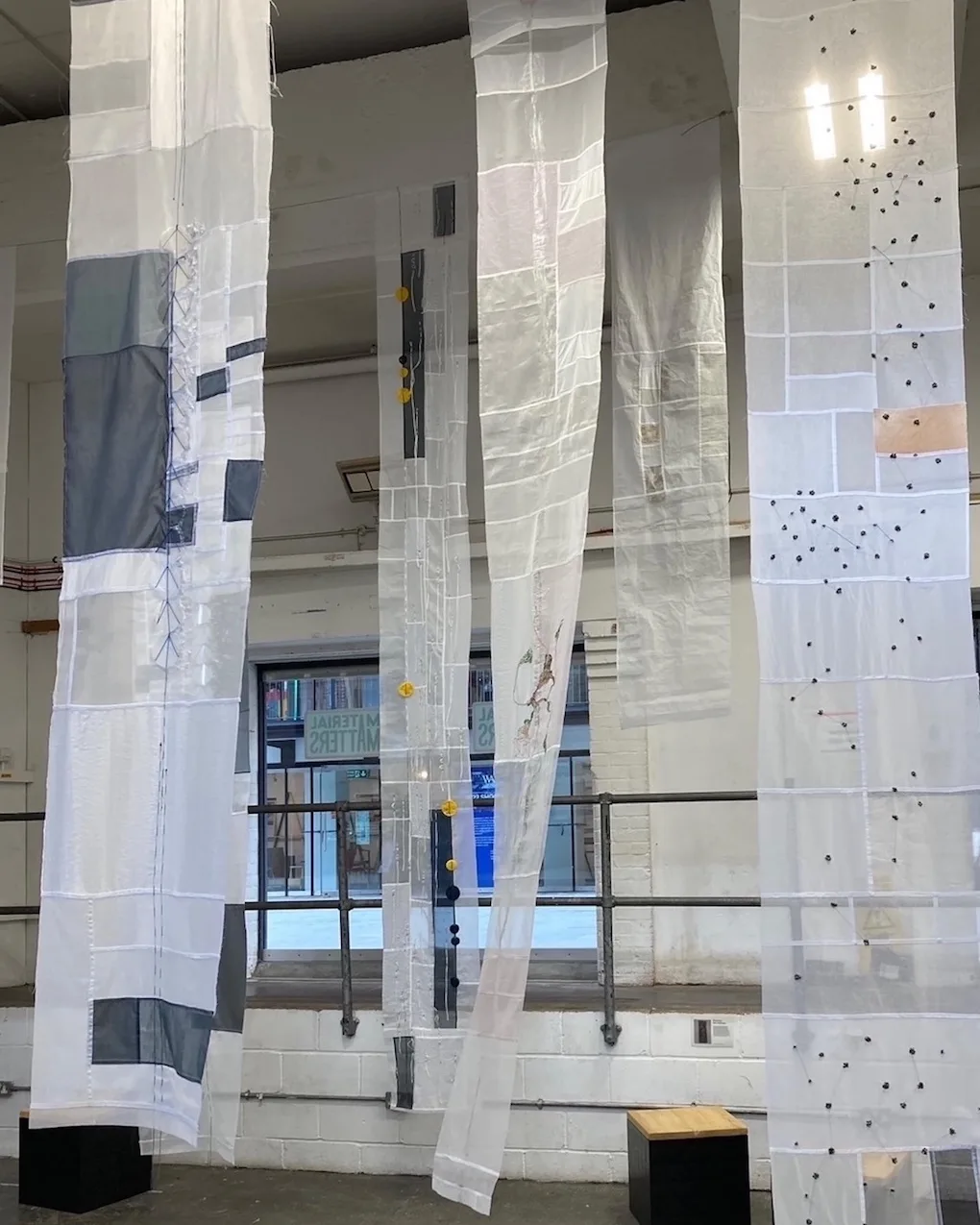
Each hanging is 6m x 50cm (20ft x 20″). Hand beading and embellishment, hand stitch, Korean patchwork. Deadstock and donated materials, seed beads, sequins, cotton and silk thread, fabric paint, cotton organdie.
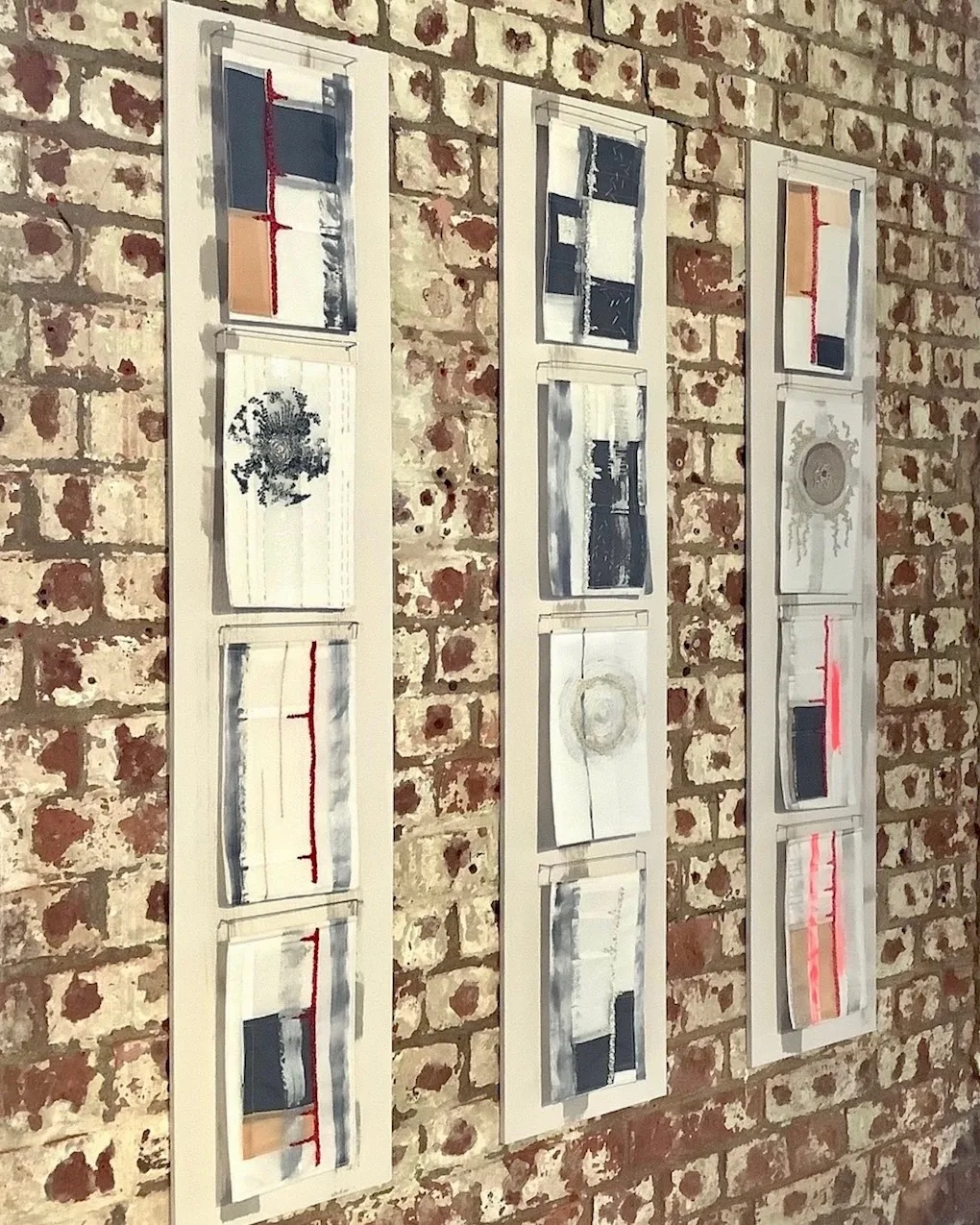
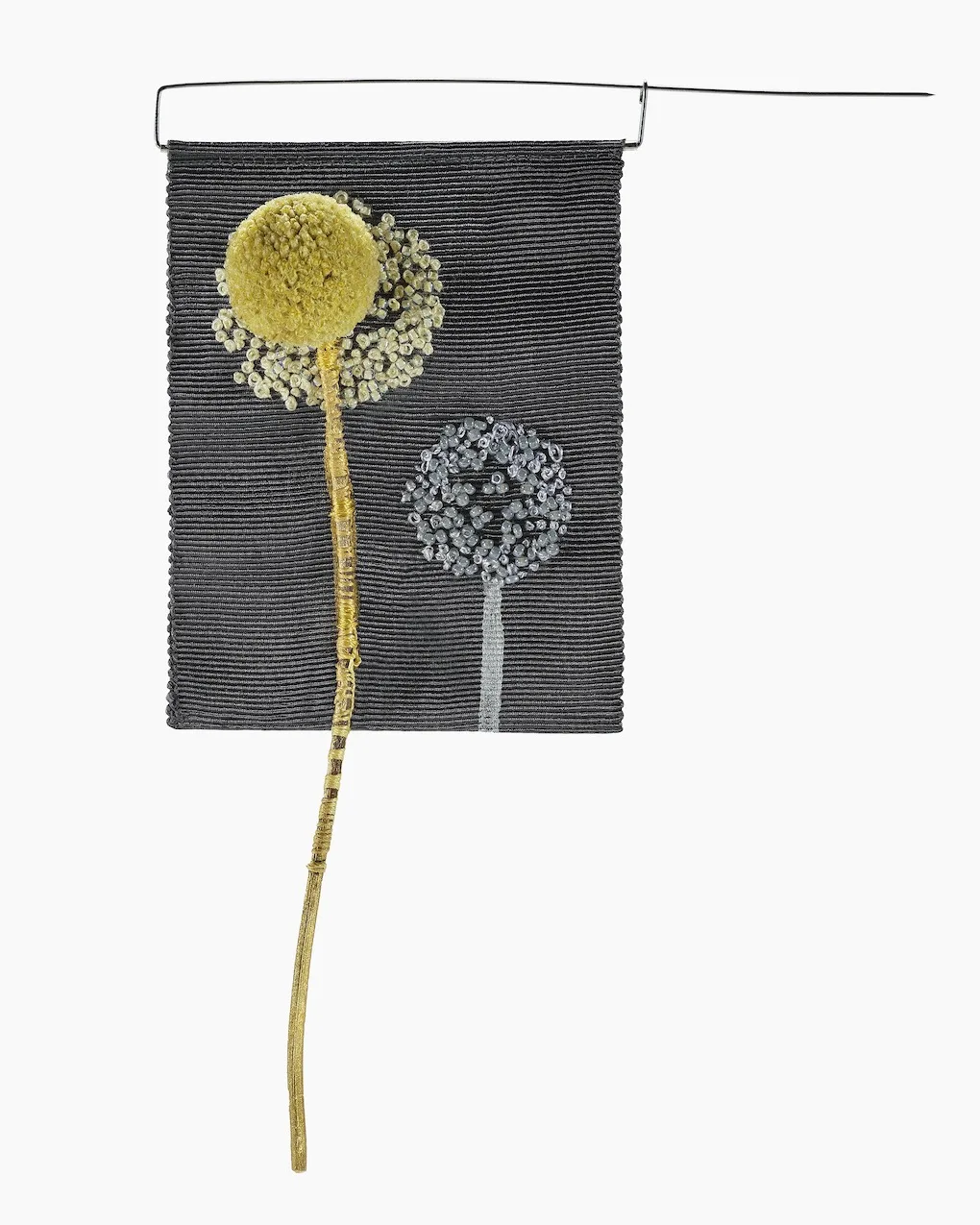
Seeing clearly
I abstract everything. I tend to think of my work as creating surfaces, adding layers to existing surfaces and building up texture. It’s never about recording a landscape or a flower.
Looking properly is key. Seeing how a flower is constructed: how does it open, bloom, wither, and break down? The changes in colour, scale and texture really fascinate me.
The same goes for landscapes – both the natural landscape and the built environment of London. How do they change year on year? How does that skyline change? What does that do to the sky? How do shadows change because of it? This is the type of thing I notice.
Then I’m looking at the opposite – the micro – the surface of the pavement that I walk on every day, the changes to a wall or fence over time.
I take a lot of photos and keep them on my phone as a record. From these I create collages. I might blow something up, cut it up, overlay it, paint on it, then scan it and start all over again.
The details come by working in stitch. My embroidery frame or hoop is my sketchbook and fabric is my paper. I work very intuitively. My work is abstract and textured.
It’s so difficult to articulate why I love what I do. It blocks out everything else, even when I’m working on a commission piece to a tight deadline.
‘When I’m stitching, I can lose hours.’
Beatrice Mayfield, Textile artist
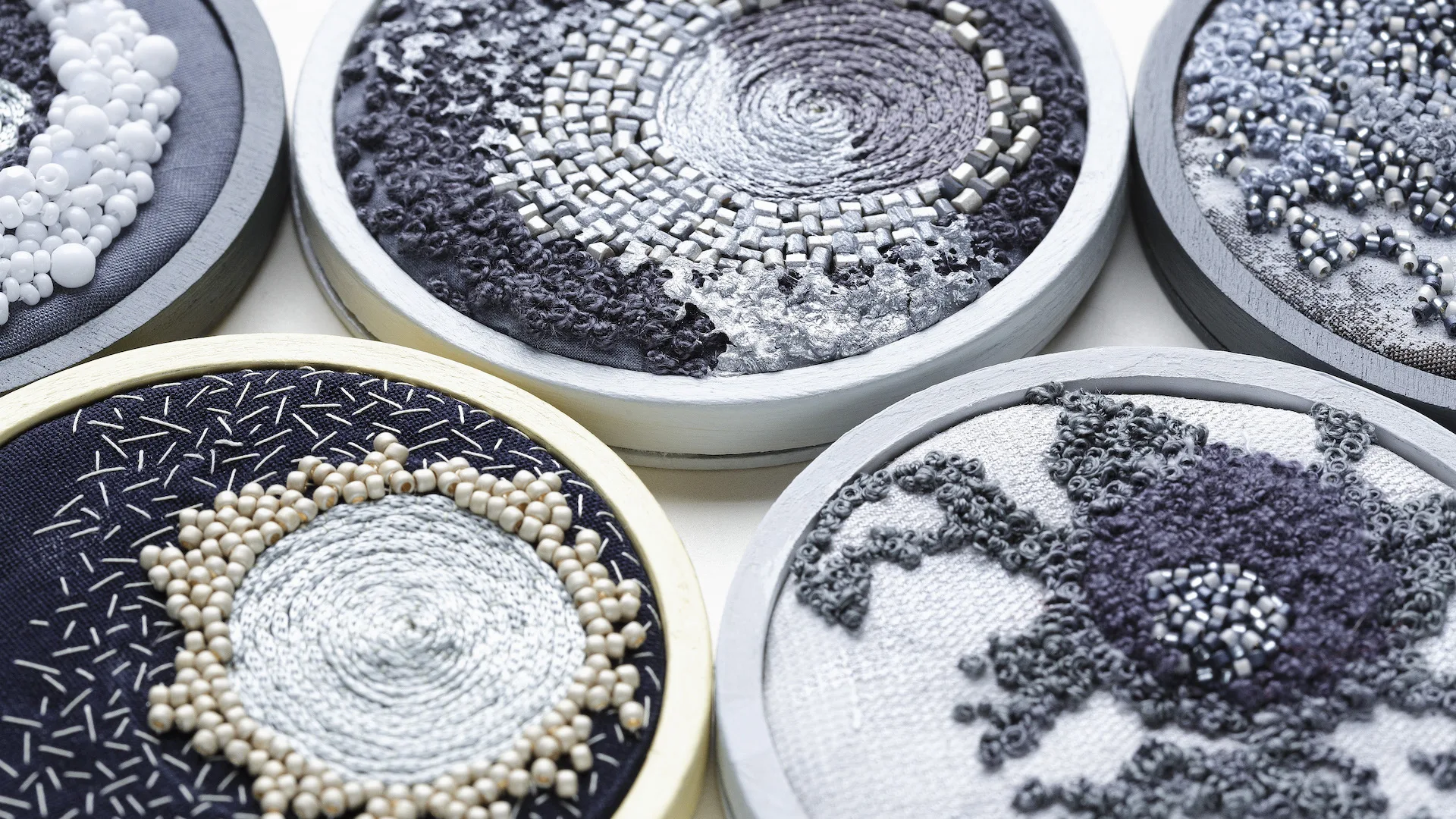
Towards sustainability
I collect fabrics, beads, papers, threads – anything I can sew with and that will create texture or contrast.
For the last few years, I’ve been trying to use as much deadstock or donated threads, beads and fabrics as I can. I’m probably about 60 per cent there. I tend to get deadstock fabric from the New Craft House, a store in Hackney, London, selling designer deadstock fabrics and haberdashery.
For commissions, however, this isn’t always possible, so then I try to source natural fibres, such as linen or wool yarns. I often use yarns from the Handweavers Studio in London, as they do interesting blends and it’s close to where I live. I love pure silk embroidery thread, especially Au Ver à Soie threads: the feel of them is beautiful and they have a great range of colours.
I’ll use any bead, and have a huge collection. If I have to buy new then I tend to use online sources such as Creative Beadcraft, Peppy Beads or Spoilt Rotten Beads. I also like using natural materials, such as real or dried flowers or horsehair. My favourite haberdasheries are Ultramod Mercerie and the Mokuba ribbon store, both located in Paris.
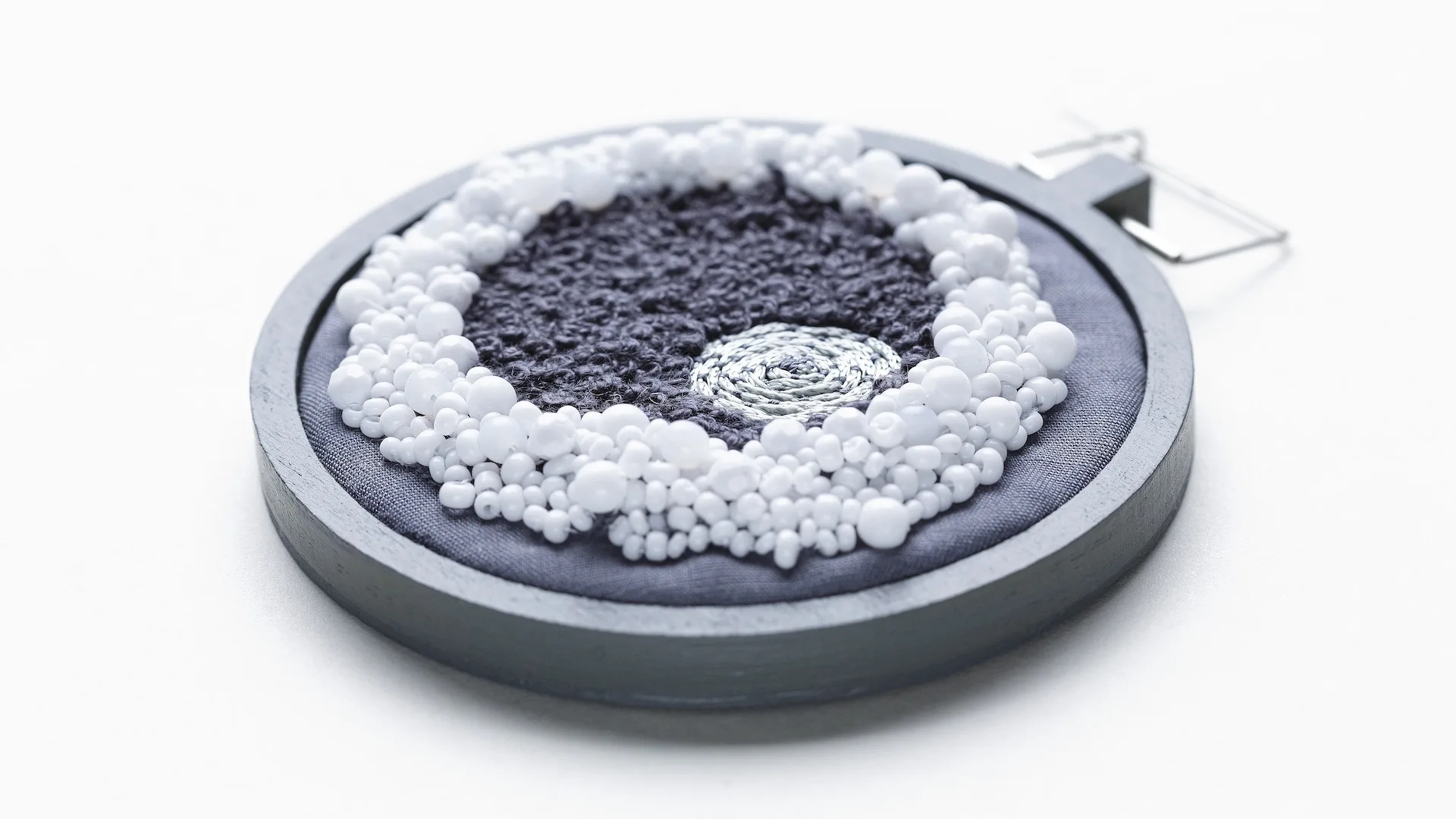
Learning by making
While on my foundation course, we had a lecturer who made us tear up our work at the end of the day or draw onto a surface that would be wiped clean at the end. I learnt so much from this.
I learnt to appreciate the process of making and that the final piece isn’t necessarily the most important part. This is why sampling and trying things out is key for me – and enjoyable.
Sometimes samples don’t work. The final pieces might not work. Cutting pieces up and then re-using them is all part of the making process. Everything comes back to looking closely.
As a maker, you have to find your voice, which can take time. Notice what grabs you: detail, texture, colour? Is your style illustrative? Do you like to tell stories? Keep exploring this. Then you work out which techniques or materials you can really exploit to help you develop this voice.
‘Don’t be precious about your work and don’t think you’ve failed if something doesn’t work the first time.’
Beatrice Mayfield, Textile artist
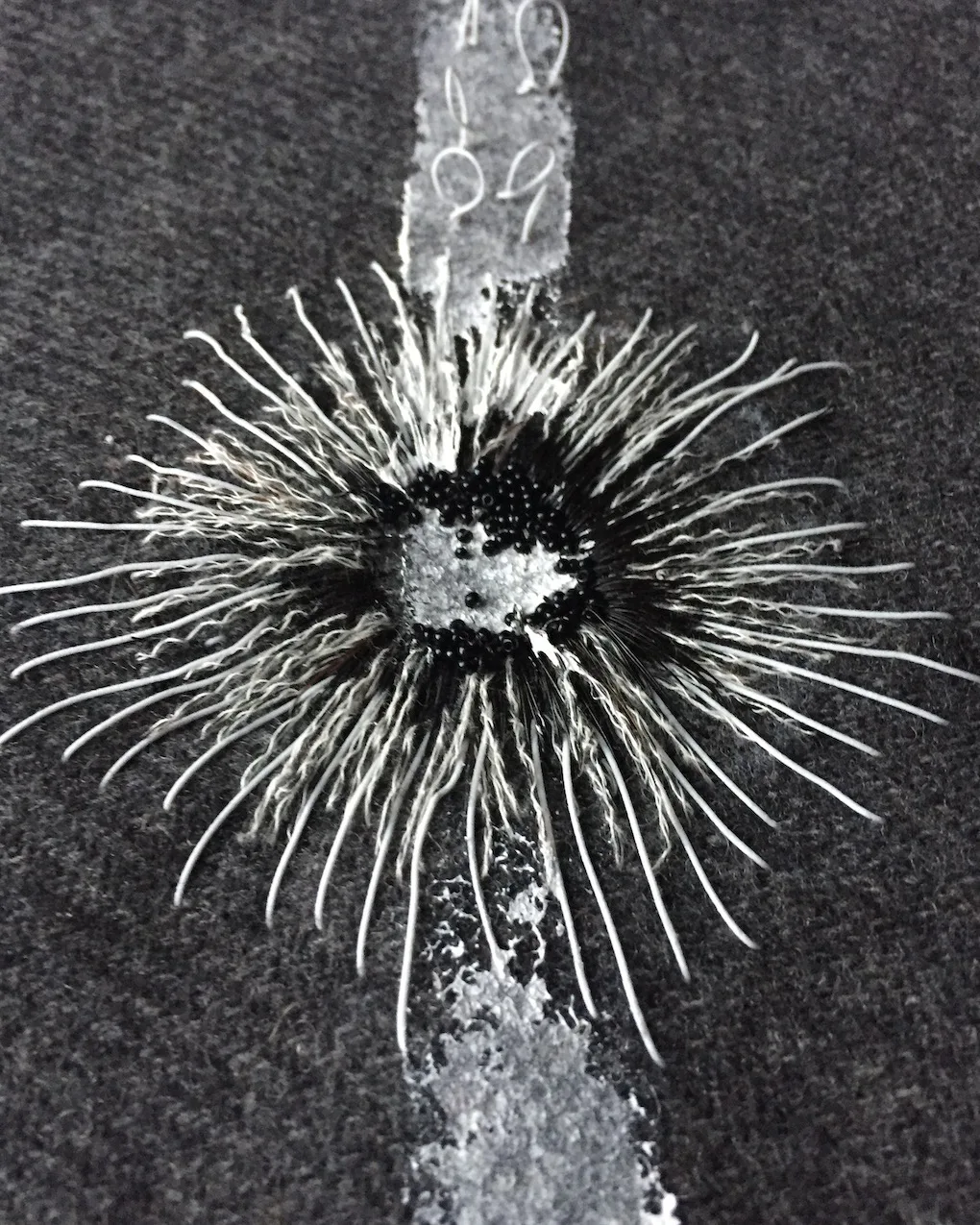
Playing to strengths
As an embroidered, it’s natural to collaborate and I undertake a lot of bespoke commissioned work for clients. The embroidery is normally just one element – it has to go on something, so you are often working collaboratively as part of a team. I’m often working alongside other experts, so it’s not just about doing what I want.
As I like working to a large scale, I need help to complete projects. So, as well as working with a team of embroiderers on other projects, I’m used to people working for me. I think it really helps that I have experience doing bespoke work as well as commissioning and curating.
My major collaborator is the digital embroiderer Jacky Puzey. We met about ten years ago. I thought what she was doing with digital embroidery was amazing. It’s unique. I respect her skill level although it’s not something I’d ever want to do. She was looking to add depth to some pieces, so she spoke to me about introducing beading into her work.
We have quite a similar approach and a huge amount of respect for each other’s work, so it’s about each playing to their skills. We’ve worked on numerous interiors, art, fashion and film projects together.
The piece for the HBO fantasy drama ‘House of the Dragon’ came via Jacky but was very much a collaboration. Jacky is based in Bristol and I’m in London so a lot of our collaboration is done via video calls and many, many photographs.
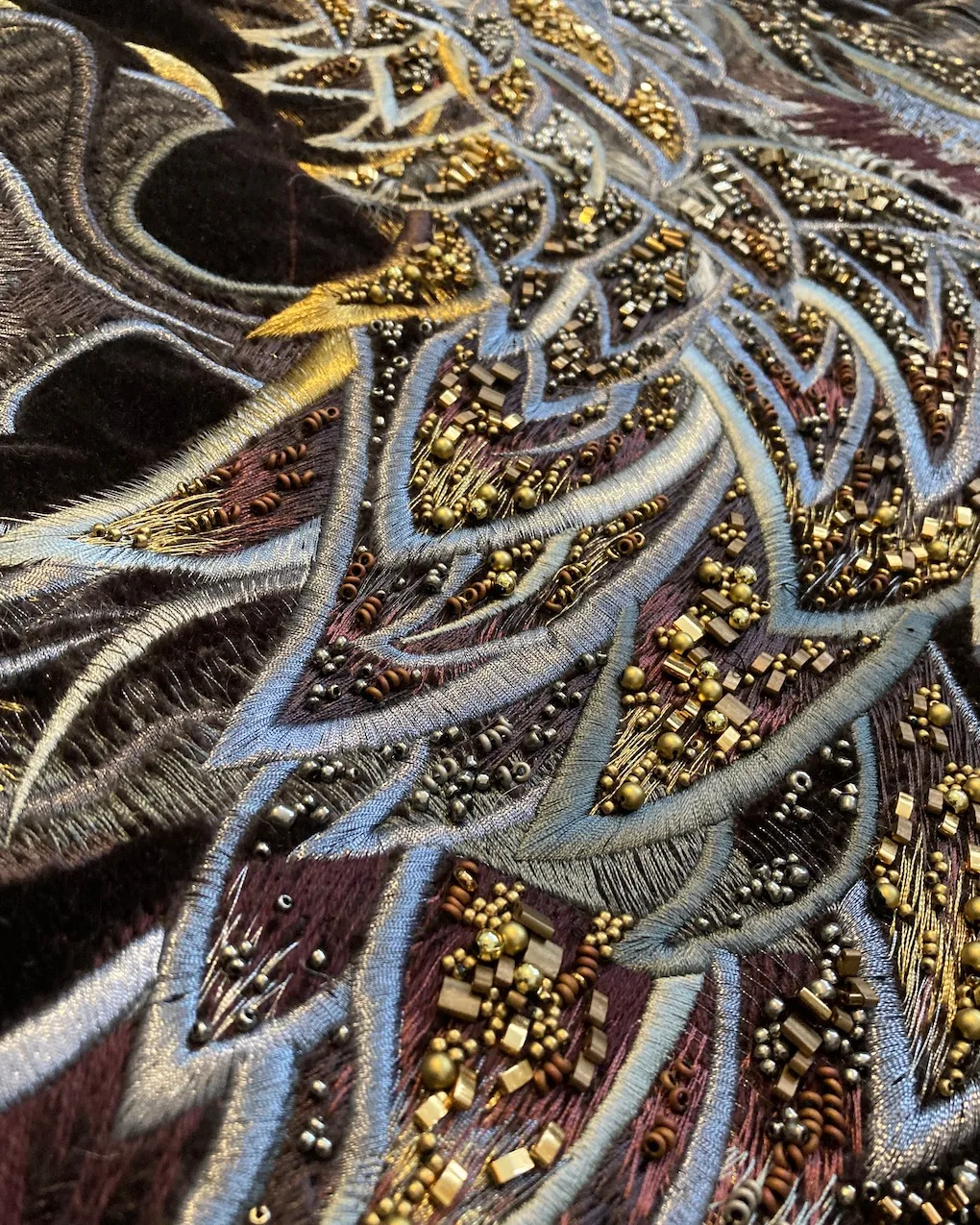
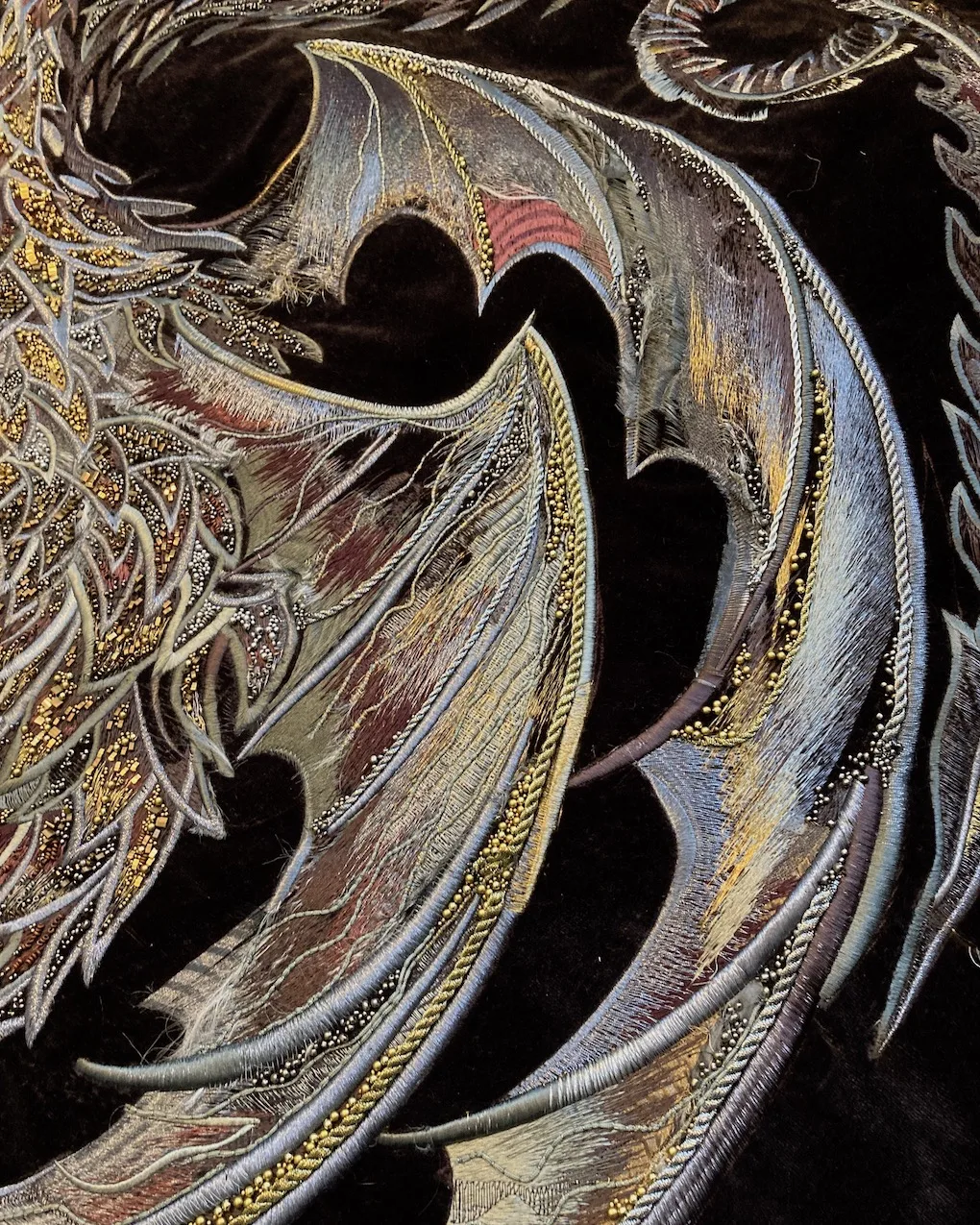
Stitcher of dragons
The brief for the House of the Dragon piece was to create a banner that depicts the sigil – a three-headed dragon – of the ruling family. We were given the outline of the motif and told it needed to relate to and have a connection with, similar themes to the television show ‘Game of Thrones’.
It had to measure two square metres (21½ sq. ft). At that point, they didn’t know how it would be lit and they wanted it to appear antique, as if it had been part of the family for years. Filming was taking place as we were making it and we only had three months for design, sampling and making.
Jacky started with the illustration, sourcing dragon-like surfaces, colours, patterns and textures from past pieces. I was given the image of a key embroidery surface used in ‘Game of Thrones’ by the artist costume embroiderer Michele Carragher – this was quite intimidating as her work throughout the whole series was amazing.
I was sent an image of a sample for one of the costumes for Daenerys – Mother of Dragons. I had to be careful not to copy it, but to use it as a reference and interpret it.
I created samples on small areas of digital embroidery – trying out colours, different types of beads, cording and edging for the wings while oxidising beads and breaking down surfaces. We had lots of conversations throughout the whole process. Jacky was digitising designs and sharing her progress every day. Then I was sampling and working on the final pieces.
I had ten days for beading the finished piece. I used a mix of beads – Tila beads, which were a reference to the sample by Michele Carragher, demi toho beads (like rings) and a variety of different sized seed beads.
I used a mix of colours. In the beginning, these were very matt, but two days from the end, the commissioners decided it would be lit by candlelight so I had to add in more reflective and shiny beads. It was very twinkly by the end – and there were even beads on the dragon’s teeth and tongues.
The wings were corded. I used a range of thicknesses to get height – from rat tails to upholstery cord, which were couched or slip stitched. The ends had to be bound as I couldn’t plunge the cord ends through Jacky’s embroidery.
Although it was just on screen for a matter of seconds, it was a lovely project and one which I think played to both our strengths and skill sets.
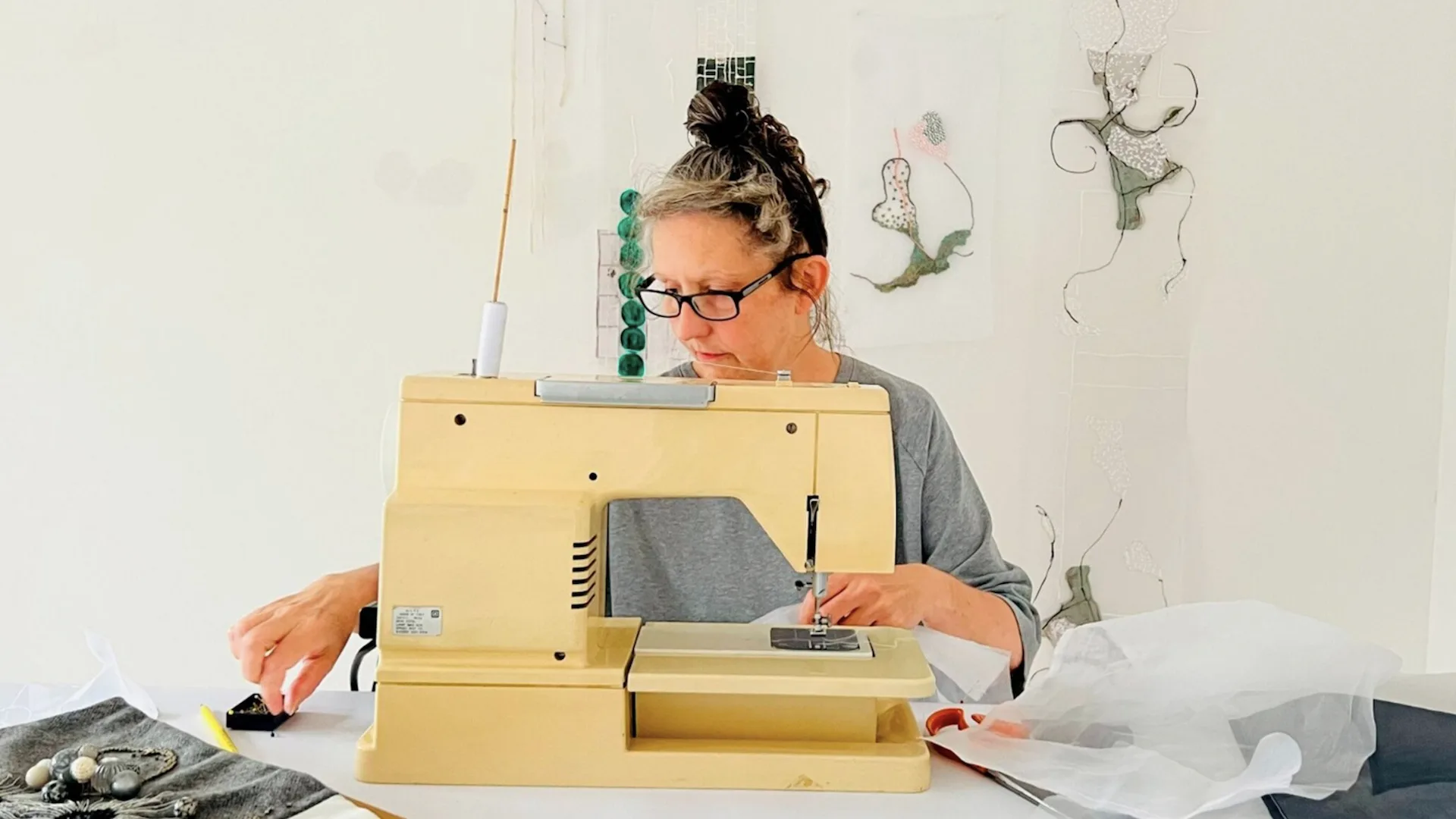
Finding my place
When I was small my grandmother used to make dolls’ clothes for me. I was fascinated by the French seams – as well as the handmade buttonholes. It was all about the finish and precision.
Making things was always encouraged. I learnt to sew, embroider and knit at primary school and at home. I really started to get into textiles through making my own clothes when I was in my teens.
I’ve always been interested in the importance of place. My foundation course led to a degree in Public Art at Chelsea College of Art. There I was creating large scale constructed textile pieces, using hand printing, painting with fabric dye, free machine embroidery and hand stitch.
Although I didn’t particularly enjoy my degree, I did learn a lot about working as a team, working with clients and to commission. We undertook a lot of live projects, which meant working to deadlines and seeing work being made for existing places and sites. I also made lifelong friends there.
After graduating, I went on to work for Common Ground, a grassroots organisation connecting people with nature, on projects that celebrated the local distinctiveness of places through art. I was working on the commission side of public art, which led to curating and then working with makers to develop their careers.
Although I was very much in the craft sector and I was always making, my own personal art practice wasn’t my main focus.
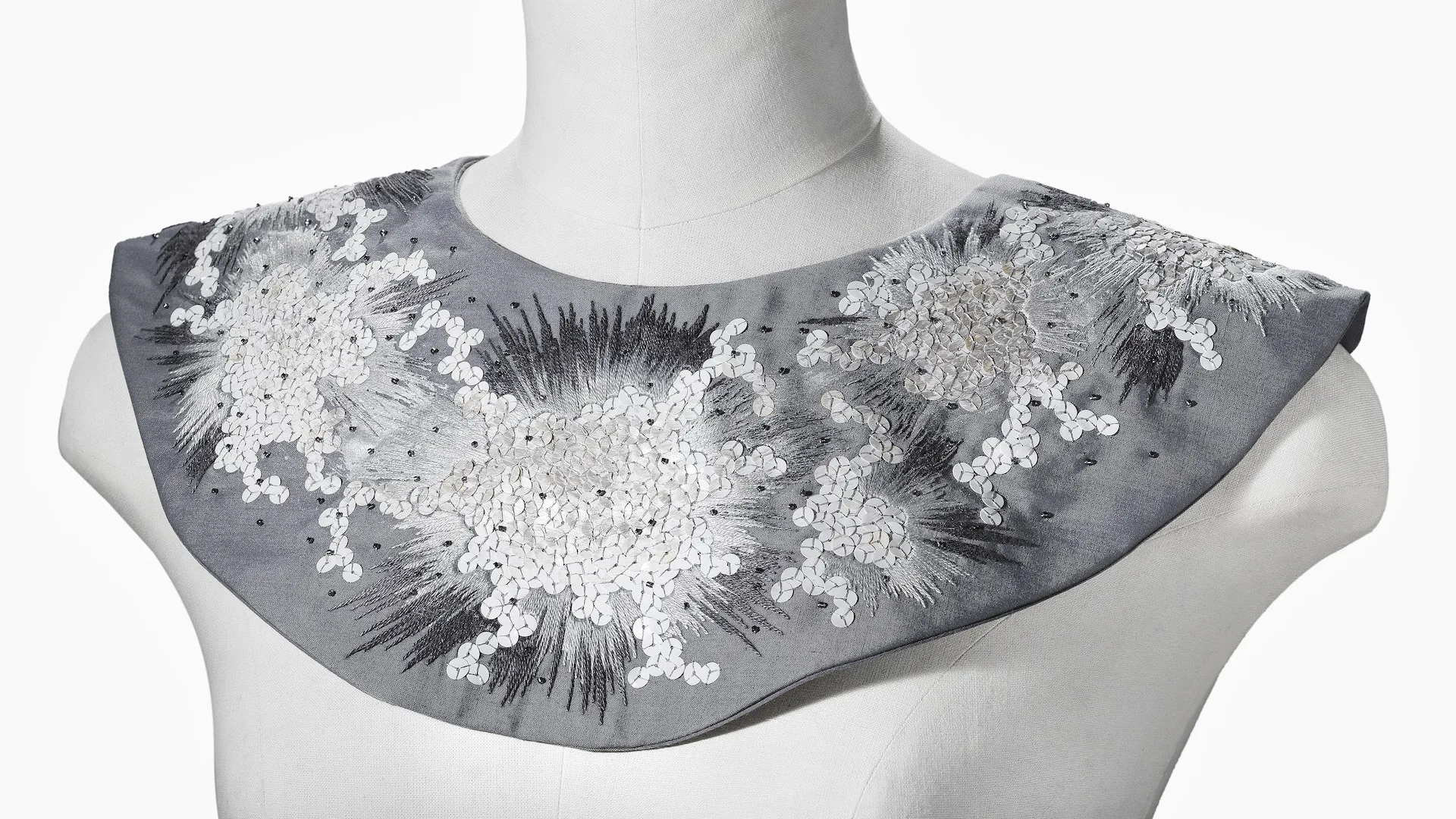
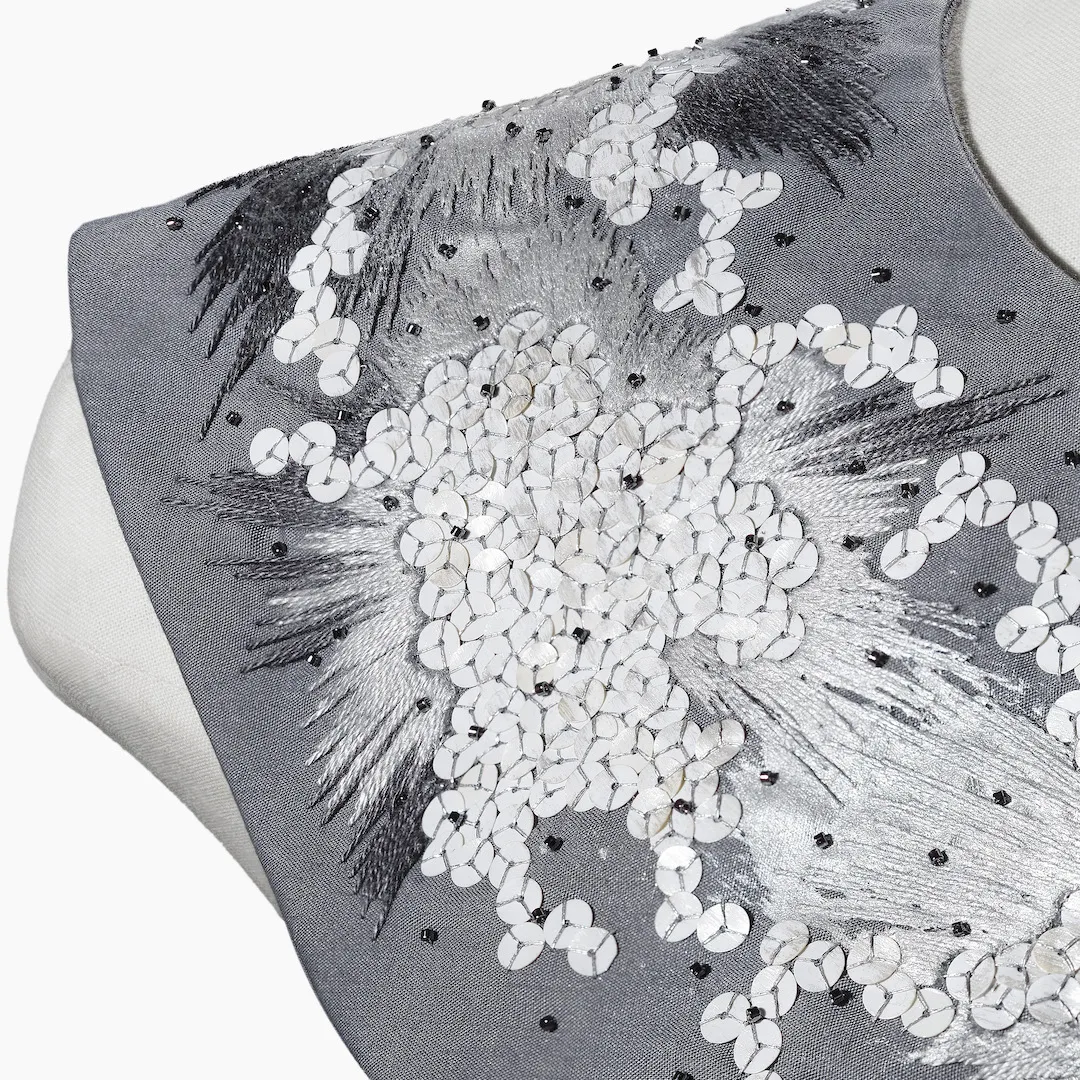
Following my heart
About 12 years ago, I realised how much I wanted my own practice back. I did a few short courses in hand embroidery to bring my skills up to scratch. I then spent a year focussing on upskilling – learning traditional stitches through courses at the Royal School of Needlework and Central Saint Martins. I also studied couture work such as tambour, beading and other techniques with Elisabeth Rouleau, a French couture embroiderer.
I loved these short courses and developing my hand embroidery skills. Coming back to learning after such a long time and being able to do something for myself was liberating. I was the one deciding what courses to do as well as learning the skills I wanted. In a way, it was a bit like designing my own MA.
By then, I knew much more about the industry and sector I wanted to work in, plus how to run a creative practice. So in some ways, I felt confident, however, I also suffer from the worst impostor syndrome!
‘Returning to my own art practice means I push myself harder and say yes to nearly everything I’m offered – even if I’m not sure I can do it.’
Beatrice Mayfield, Textile artist
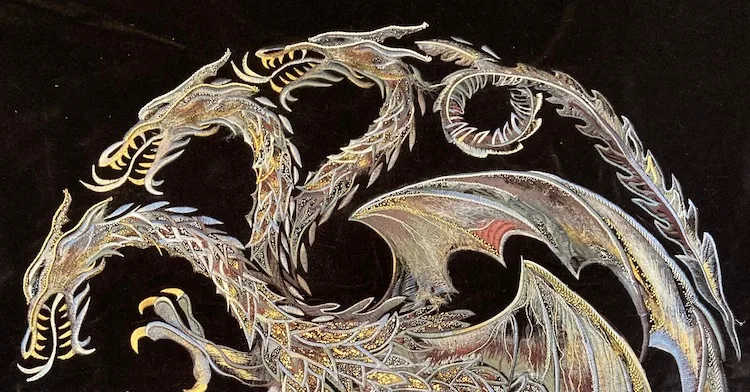
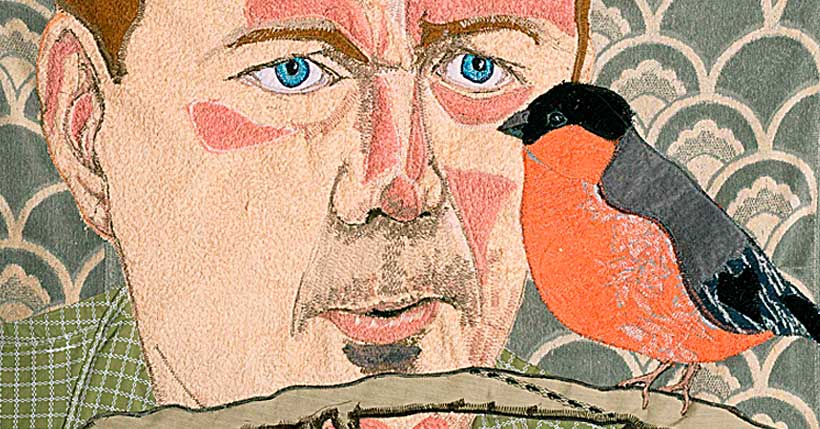
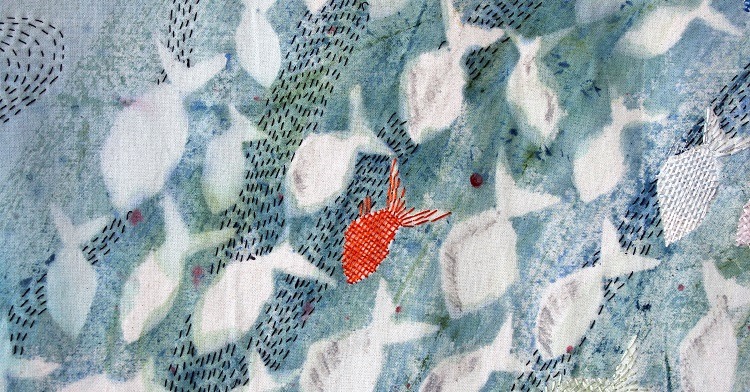
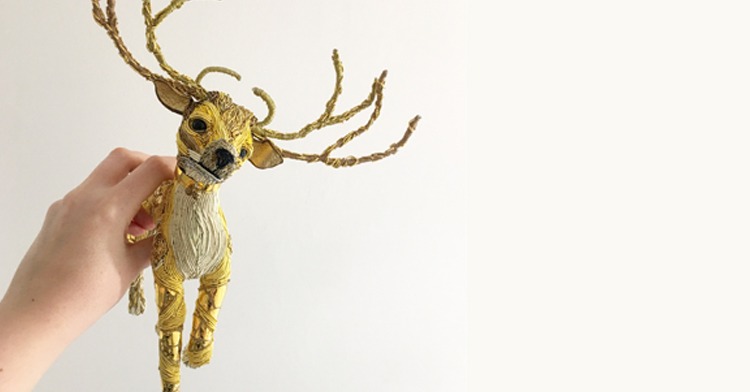
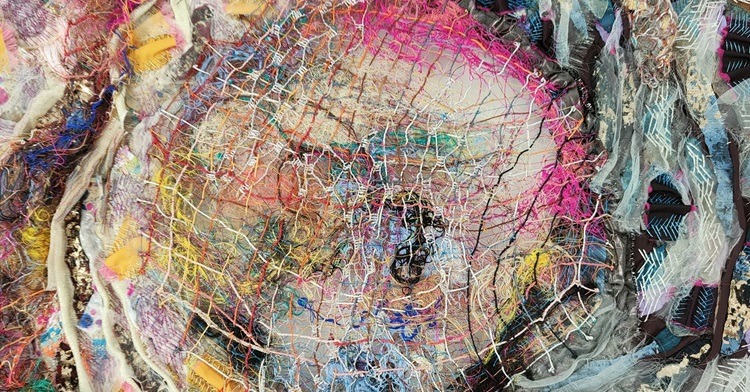
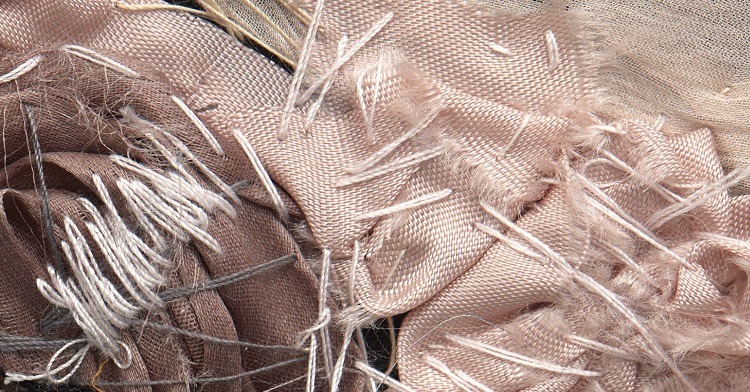
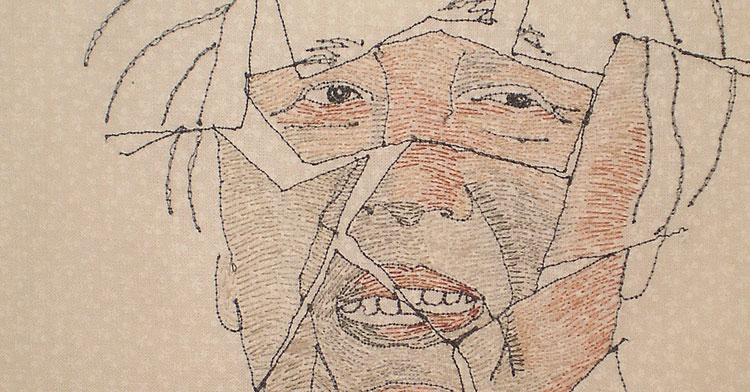
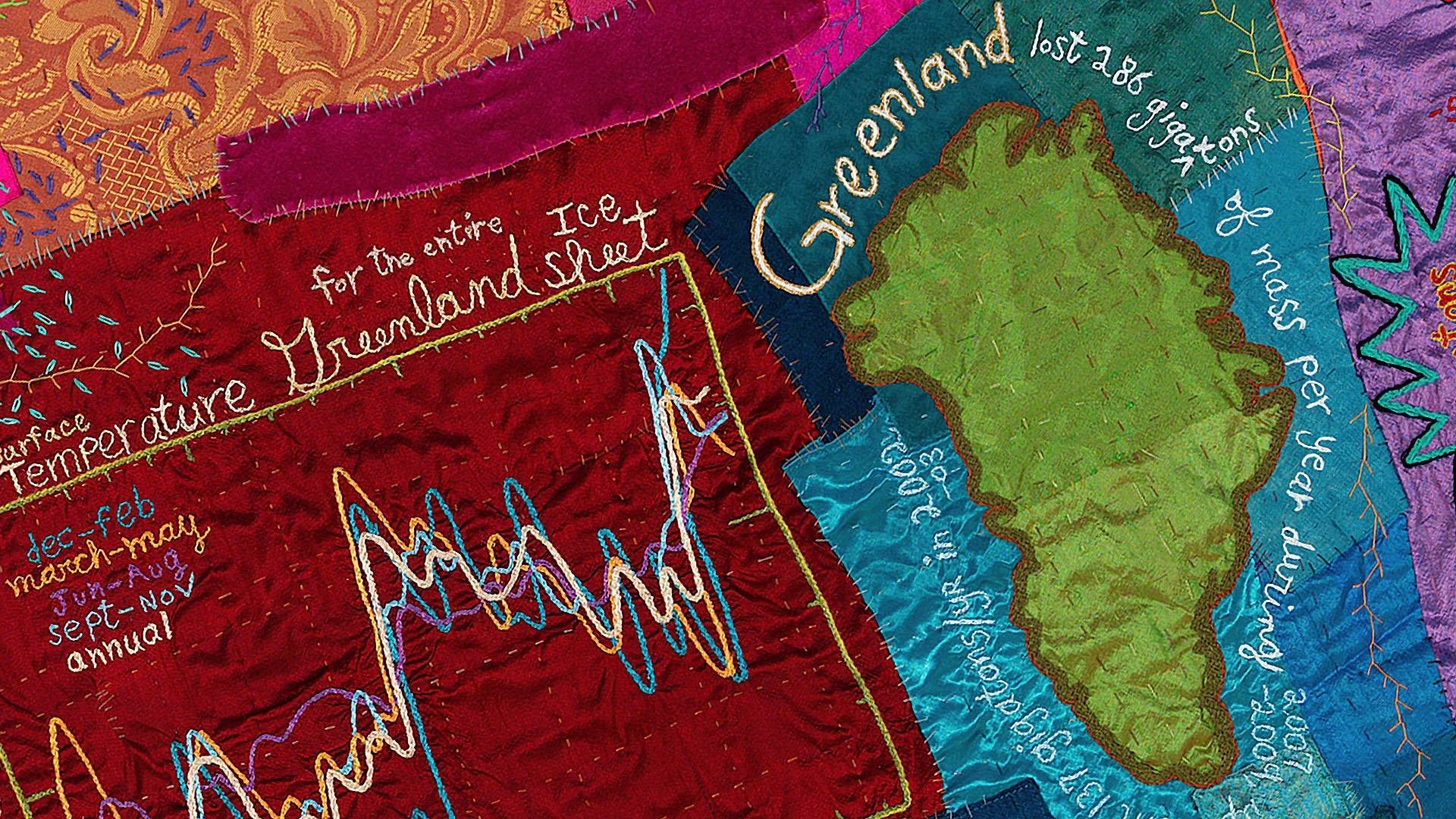
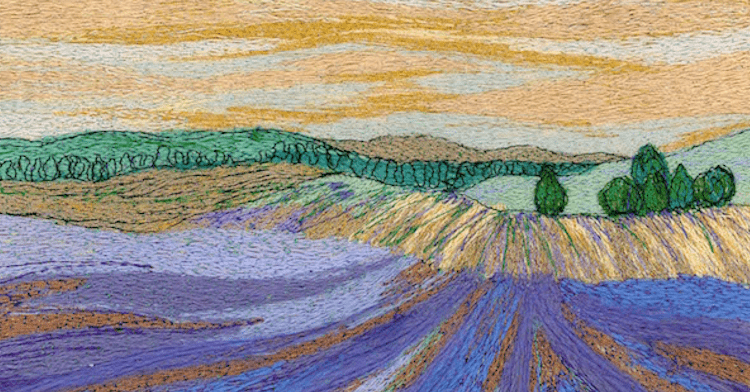
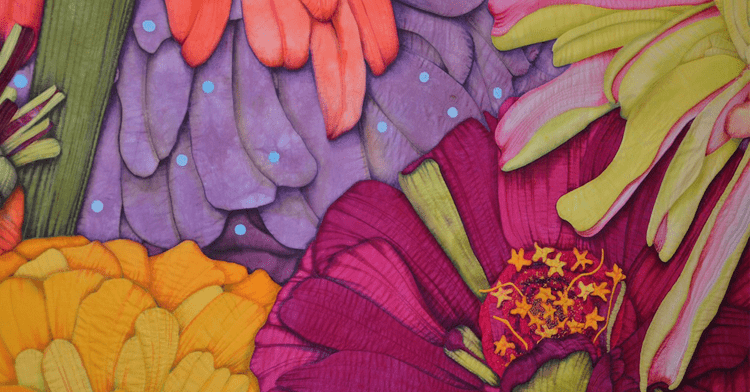
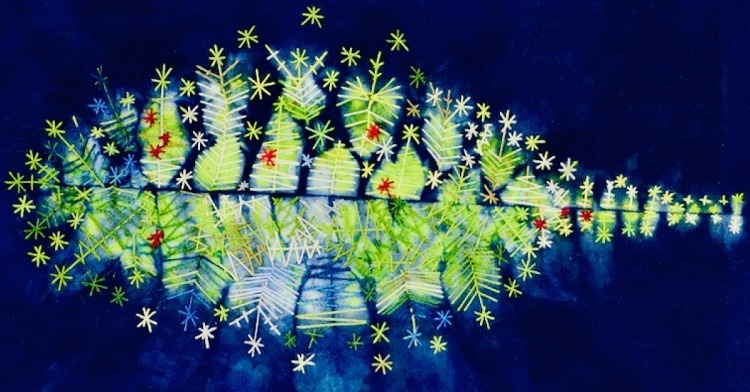
3 comments
Louise
Thank you so much for sharing, the panels are amazing to me and I have some to be repurposed at home, this is what I will experiment next with, Thank you !
Beatrice Mayfield
Thank you, repurposing and reusing textile is so important and can be really push you creatively. I hope you enjoy your next project doing this.
Louise Fisher
Thank you so much for sharing …… so informative and interesting.